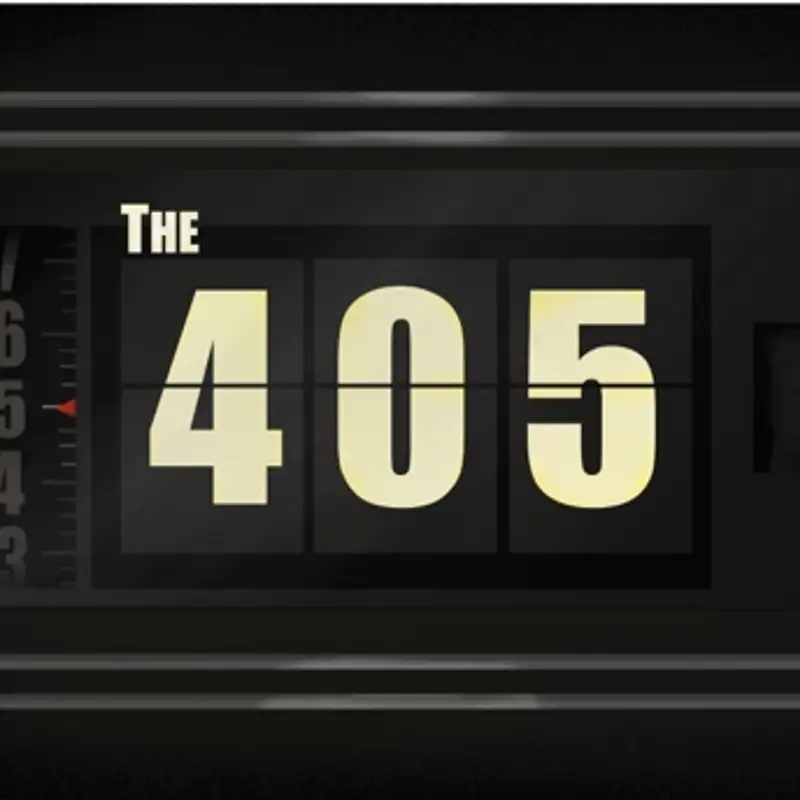
The 405 Aired Oct 9th, 2025
Want to again welcome you to the 04:05 coffee break. Guys, beautiful day. Get you a cup of coffee, glass iced tea, possibly a bottle of water. Let's see what's happening out there.
OK Solberg:Spring wheat is worth $5.14 a bushel. 550 pounds steer calf, I'm not kidding. I'm not blowing smoke. $4.79 a pound. A butcher hog in Iowa will bring you 67¢ a pound, and the lamb that's fat in Billings weighing a 100 pounds isn't moving one direction or the other. Still, right there at $2 and a penny.
OK Solberg:Okay. Bible verse right up front. Exodus 25:10 They shall make an ark of Acacia wood. Two cubits and a half shall be its length, a cubit and a half its breadth, and a cubit and a half its height.
OK Solberg:Okay. God's talking to the children of Israel and telling them the measurements of the Ark of the Covenant. But that verse begs the question, what's a cubit? It's pretty hard to build something if you don't know the measurements. I've worked pretty good with metal and welding, but when it comes to wood carpentry guys, shoot, I can cut a board twice and it's still too short.
OK Solberg:So how long is a cubit? Well, first, you have to understand that a cubit could and would vary from culture to culture, but it started by simply being the length from a man's elbow to the tip of his middle finger. Now can you imagine how that could vary? One guy has a short arm and another guy has a long arm with stubby fingers. But finally, in ancient Egypt, the royal cubit was standardized by a master cubit rod and that became the exact measurement which was 20.6 inches to 20.7 inches.
OK Solberg:Still enough that it would cause a margin of error. Anyway, two cubits would be 41 inches plus a few fractions. Now you're probably wondering why I'm telling you all this. Well, here's the reason. As I thought about what to write about for today, I looked on my wall in my office and there I have hanging an inch and three quarter box and open end wrench, an inch and three quarters.
OK Solberg:Why is it in my office, you might ask? Well, because I don't wanna forget where I was. There was a day that I had to wrench on something very often. But anyway, my inch and three quarter open end box end wrench is hanging there to remind me. And the wrench that's hanging on the wall is about three inches longer than a cubit.
OK Solberg:Okay? Oh shoot. I could go a dozen different directions from here. I could tell you how frustrating it was when someone would tell me that barley was selling for $4 a 100. Barley selling for $4 a 100, but you could buy a truckload for $80 a ton.
OK Solberg:It makes you scratch your head and wanna scream, so how much per bushel? See, if we start with hundredweight, let's stay with hundredweight. Right? But all this cubic inches, hundredweight, and bushel price I told you is so that you will understand this. Fractions to some people can be as confusing as cubits and hundredweight.
OK Solberg:Here's a true story from my farming life, and it's while I'm working with my father and we're wrenching, fixing on a combine. And my dear old dad hollers out, bring me a wrench one sizer that one size bigger than five eights. I love that memory of my dad. Fractions are hard when you're working and trying to get the combine running. Shoot.
OK Solberg:We have a quarter inch. We have a five sixteenth inch. We have five eighths. We have 15 sixteenths. Think of my father's statement.
OK Solberg:Bring me a wrench one size bigger than five eighths. I'll tell you how he came to that conclusion because he had a five eighths wrench in his hand and it was too small. But I thank my math teacher in junior high, and her name was Miss Gurnot. She taught us fractions real good. Miss Gurnot had one rule, find the common denominator and always reduce your fraction.
OK Solberg:That's all you really need. Most common standard wrenches increase in size by one sixteenth of an inch. Remember, I said most, not all. So think of this, you have a nut or a burr if you prefer or the head of a bolt and it's four sixteenths of an inch. Well, can you reduce that?
OK Solberg:Sure. Four goes into sixteen four times, therefore, four sixteenths equals one quarter of an inch. Eight sixteenths is a half inch. 10 sixteenths is five eighths, and 12 sixteenths is three quarters of an inch, and 16 sixteenths is equal to an inch. Now I want you to know my dad knew that.
OK Solberg:But when you're under pressure and the sun is hot and the grain is ready to cut and you wanna get the combine running, it's just easier to say, bring me a wrench one size bigger than five eights. Thanks, dad. I love that memory and it reminds me of Miss Gurnot, my junior high math teacher.
OK Solberg:So until next time, as you go out there, remember now, don't be bitter.